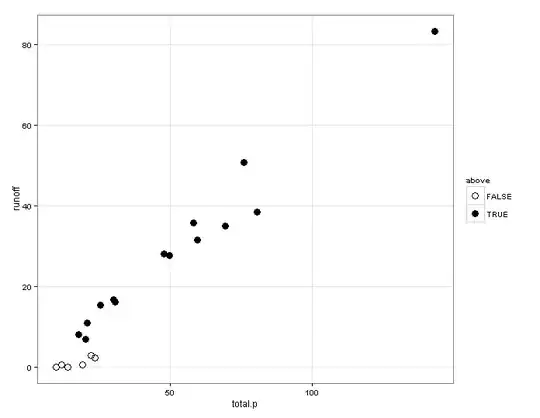This is related to my questions here and here. I am still struggling with my model, so I am taking it back to basics.
My assertion is simple, I believe that watershed runoff will have a different relationship with precipitation depending on if the soil water table reaches a threshold. The soil water table is a function of antecedent water table, precipitation, and a scaling parameter (soil porosity, essentially) $watertable = antecedent + C*Pcp$. So,
$$Runoff = \begin{cases} f_1(Pcp) & \text{if $(Ant + C*Pcp) < Thold$;}\\ f_2(Pcp) & \text{if $(Ant + C*Pcp) \geq Thold$;} \end{cases}$$
As a first approximation, I think both $f_1$ and $f_2$ are linear in $Pcp$ (see figure below). I am trying to construct a model that would allow me to test for the existence of this threshold effect. It seems to me that I should test this model against two competing models
- $runoff = f(Pcp)$
- $runoff = f(Pcp)$ with a breakpoint in $Pcp$
So, two questions:
- Does this seem like an appropriate way to test for the effect I described above?
- How would I go about fitting and calculating statistics for my full model above? In particular estimating the parameters and determining AIC and $r^2$ values. I am familiar with the segmented package in R, but not sure if it can be used here. Again, from looking at the data it seems that the regressions are linear, but if the method could be easily extended to other relationships that would be interesting.
Thank you for reading all this, it has been driving me nuts and I hope to get it resolved.
edit: An important point that I did not mention: If possible, I would like to derive the parameters $C$ and $Thold$ from the data. Estimation of $Thold$ is more interesting from a scientific point; I could pre-suppose $C$ based on some physical data, but would be curious to try and derive it as well.
